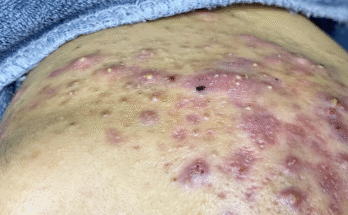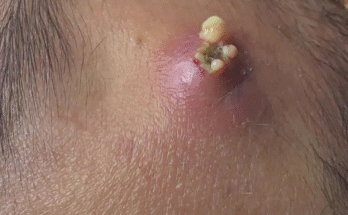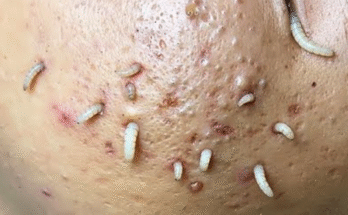Conquering the Depth: A Comprehensive Guide to Cystic Acne and Blackhead Management
Dealing with severe acne can feel like an uphill battle. This comprehensive guide navigates the complexities of deep cystic acne and its often-associated companion, blackheads, providing clear strategies for diagnosis, treatment, and long-term skin health.
Understanding the Beast: Deep Cystic Acne
What Lurks Beneath the Surface?
Deep cystic acne, the most severe form of acne vulgaris, is more than just blemishes; it’s a painful and emotionally taxing condition. Unlike surface pimples, cystic acne forms deep within the skin, manifesting as large, inflamed nodules filled with pus or fluid. These lesions are intensely red, swollen, and tender, often persisting for weeks or even months, carrying a significant risk of scarring and hyperpigmentation. Their depth, size, and painful nature distinguish them from other acne types.
The Root Causes: Unraveling the Mystery
The development of cystic acne is multifactorial. Hormonal fluctuations – a common culprit during puberty, menstruation, and pregnancy – play a significant role. Excessive sebum production, bacterial overgrowth (specifically Propionibacterium acnes), and clogged hair follicles all contribute to the problem. Furthermore, dietary choices, lifestyle factors, and stress levels can exacerbate the condition.
Cystic Acne vs. Blackheads: A Tale of Two Imperfections
While both are common acne manifestations, cystic acne and blackheads differ significantly. Blackheads, or open comedones, are small, dark blemishes caused by clogged hair follicles. They sit on the skin’s surface, are generally painless, and often yield to manual extraction or topical treatments.
Key Distinctions: A Side-by-Side Comparison
| Feature | Cystic Acne | Blackheads (Open Comedones) |
|---|---|---|
| Depth | Deep under the skin | Surface level |
| Inflammation | Significant | None |
| Pain | Intense | Minimal or None |
| Color | Red, purple, or bluish | Black |
| Extraction | Difficult, professional | Often self-extractable |
It’s important to note that these two conditions frequently coexist, especially in severe cases. Many extraction videos vividly illustrate blackheads surrounding or preceding cystic lesions.
Seeking Expert Help: Diagnosis and Treatment
Self-diagnosis and treatment of cystic acne are strongly discouraged. A dermatologist can accurately diagnose the condition through visual examination, a review of your medical history, and potentially hormone level tests (especially for women) or skin cultures (in resistant cases). Their expertise is crucial for developing a tailored treatment plan.
Navigating Drainage: When Professional Intervention Is Necessary
For particularly stubborn or painfully inflamed cysts, drainage might be necessary to reduce inflammation, pressure, and infection risk. However, attempting home drainage is extremely risky and can lead to significant scarring and infection.
Professional Drainage Methods: A Safer Approach
- Sterile Needle Aspiration: A dermatologist inserts a fine needle to withdraw the cyst’s contents under sterile conditions, often followed by an antibiotic or corticosteroid injection.
- Incision and Drainage (I&D): This minor surgical procedure involves a small incision to release the cyst’s contents under local anesthesia. It’s usually reserved for large or severely painful cysts.
- Corticosteroid Injection: This reduces inflammation and “deflates” the cyst, though not through direct drainage.
Taming the Blackheads: Effective Removal Techniques
While blackheads seem less severe than cystic acne, their removal improves overall skin clarity and reduces the potential for further blockage, which can contribute to cystic lesion formation.
Methods for Blackhead Removal: A Multifaceted Approach
- Manual Extraction: Using a comedone extractor tool, proper cleansing, and antiseptic techniques, blackheads can be gently removed. This requires careful technique to avoid damage.
- Chemical Peels: Salicylic, glycolic, or lactic acid peels dissolve debris within pores, but should be used cautiously on sensitive skin.
- Topical Retinoids: These promote skin cell turnover, preventing clogging. Options range from over-the-counter adapalene to prescription-strength retinoids.
- Pore Strips: While offering temporary results, pore strips are not a long-term solution and can cause irritation or damage capillaries.
A Glimpse into the Professional Extraction Process
Professional extractions, often captured in the popular “pimple popping” videos, follow a meticulous process. The procedure begins with sanitization, often utilizing steam or enzyme masks to soften the skin. Magnification aids in precise targeting, focusing primarily on blackheads and avoiding cystic nodules unless significantly inflamed. Gentle pressure extracts blackheads, while larger lesions may require incision and drainage. The process concludes with antibacterial application and soothing aftercare.
Comprehensive Treatment Options: A Holistic Approach
Effective cystic acne management requires a multi-pronged strategy combining medical interventions and lifestyle adjustments.
Medical Treatments: Targeted Therapies
- Oral Antibiotics: Doxycycline and minocycline combat bacterial overgrowth.
- Hormonal Therapies: Birth control pills or spironolactone can regulate hormone imbalances.
- Isotretinoin (Accutane): A potent medication reserved for severe, treatment-resistant acne.
- Topical Retinoids: These help regulate cell turnover and prevent clogging.
Natural and Home Remedies: Supportive Measures
While not standalone treatments, natural remedies can complement medical therapies. Tea tree oil’s antiseptic properties, green tea’s anti-inflammatory effects, zinc supplements, clay masks for impurity extraction, and ice therapy for inflammation reduction all offer supportive benefits. Lifestyle changes like a low-glycemic diet, stress management, and diligent hygiene are also crucial.
Post-Treatment Care: Protecting and Healing
Proper aftercare minimizes scarring and promotes healing. Avoid makeup for 24-48 hours, use sunscreen diligently, apply soothing products like aloe vera or niacinamide, and resist the urge to pick at scabs. Scar treatments like microneedling, chemical peels, laser resurfacing, and silicone gel sheets can further improve outcomes. Early intervention is key to minimizing permanent scarring.
The Emotional Toll: Acknowledging the Psychological Impact
Living with cystic acne extends beyond physical discomfort; it significantly impacts self-confidence, social interactions, and mental well-being. Anxiety and depression are common, highlighting the importance of seeking emotional support through therapy, support groups, or online communities. Celebrating small victories along the way can significantly boost confidence.
Preventive Measures and Long-Term Skin Management
A consistent skincare routine is crucial for long-term acne management. A sample routine might include a salicylic acid cleanser and lightweight moisturizer in the morning, followed by sunscreen. Evenings may involve cleansing, a prescribed retinoid, spot treatment, and a non-comedogenic moisturizer. Regular professional extractions, light chemical peels, or hydrafacials can further enhance results.
Conclusion: A Journey to Clearer Skin
While cystic acne and blackheads can feel overwhelming, a proactive approach combining professional guidance, consistent skincare, and emotional support empowers you to take control. Remember that patience and persistence are key to achieving clearer, healthier skin. Never hesitate to seek expert help, and always celebrate your progress along the way.



